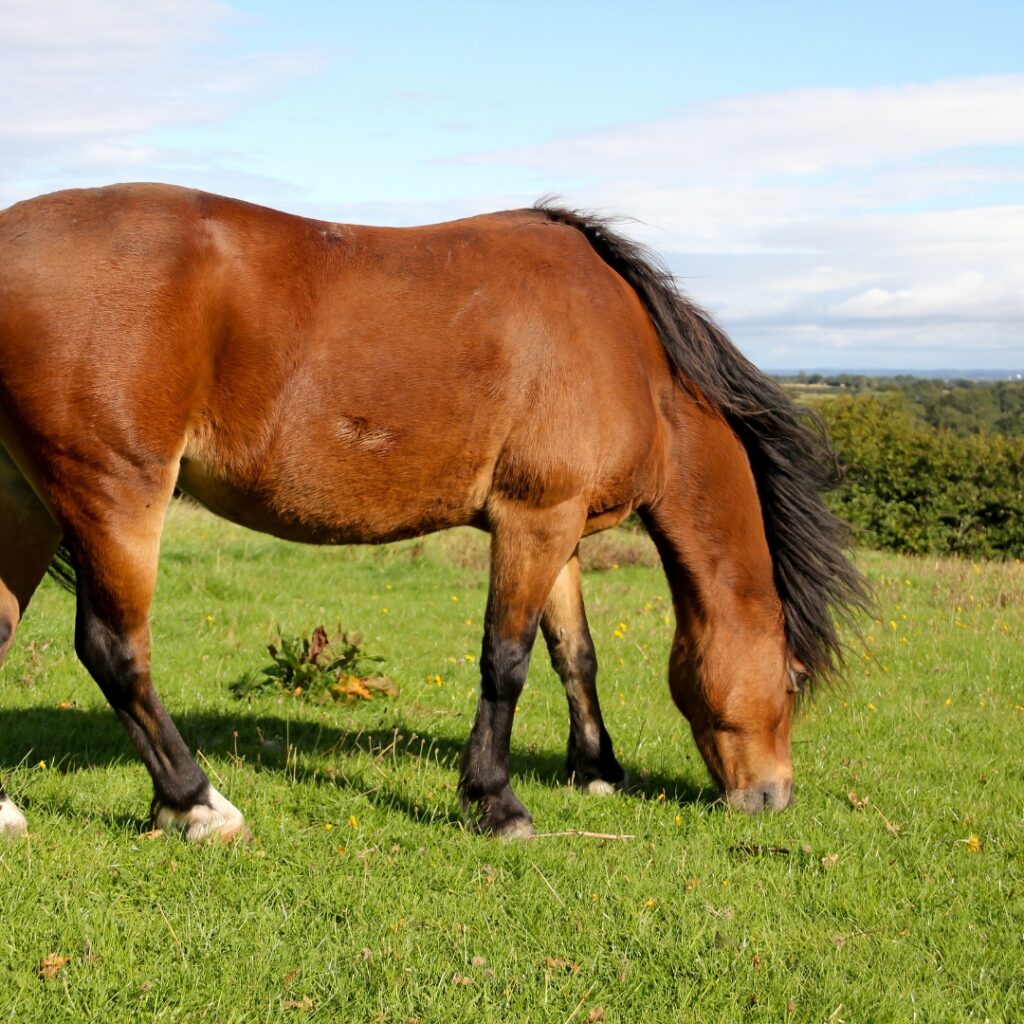
Obesity is defined as the accumulation of excess fat tissue on the body and is a prevalent issue in the equine industry. Obesity in companion animals, including horses, has been on the rise. Horses have a unique relationship with humans as they are companion animals, sport animals and working animals. Despite this, there is still a well-documented increase in the incidence of over conditioning. As an herbivorous species, horses have evolved to consume forage as their primary nutrient source. Unfortunately, the popular husbandry practices for horses in recent history promotes feeding energy-rich rations to often physically inactive horses. This results in increased over-conditioning which has negative welfare implications for the horse.
Equine obesity prevalence has been an area of research with increasing publications. A study done in mature horses in Virginia found that 51% of their sample horses were over conditioned or obese. Similar results were found in Scotland, with 45% of the study’s sample horses being classified as fat or very fat based on BCS data. These high percentages are further supported by a study completed in North Carolina where 48% of horses were being classified as overweight (BCS ≥ 6), and 20% of horses being classified as obese (BCS > 7).
Acknowledging and working to combat this issue is extremely important for equine welfare. If you have an overweight equid, now is a great time to start a plan to help them achieve a healthy body condition.
Contact Balanced Bay to get a personalized nutrition plan for your horse.
Thatcher, C. D., Pleasant, R. S., Geor, R. J., & Elvinger, F. (2012). Prevalence of overconditioning in mature horses in southwest Virginia during the summer. Journal of Veterinary Internal Medicine, 26(6), 1413-1418.
Johnson, P. J., Wiedmeyer, C. E., Messer, N. T., & Ganjam, V. K. (2009). Medical implications of obesity in horses—lessons for human obesity. Journal of diabetes science and technology, 3(1), 163-174.
Giles, S. L., Rands, S. A., Nicol, C. J., & Harris, P. A. (2014). Obesity prevalence and associated risk factors in outdoor living domestic horses and ponies. PeerJ, 2, e299.
Thatcher, C. D., Pleasant, R. S., Geor, R. J., Elvinger, F., Negrin, K. A., Franklin, J., … & Werre, S. R. (2008). Prevalence of obesity in mature horses: an equine body condition study. Journal of Animal Physiology and Animal Nutrition, 92(2), 222-222.
Wyse, C. A., McNie, K. A., Tannahil, V. J., Murray, J. K., & Love, S. (2008). Prevalence of obesity in riding horses in Scotland. The Veterinary Record, 162(18), 590.
Pratt-Phillips, S. E., Owens, K. M., Dowler, L. E., & Cloninger, M. T. (2010). Assessment of resting insulin and leptin concentrations and their association with managerial and innate factors in horses. Journal of Equine Veterinary Science, 30(3), 127-133